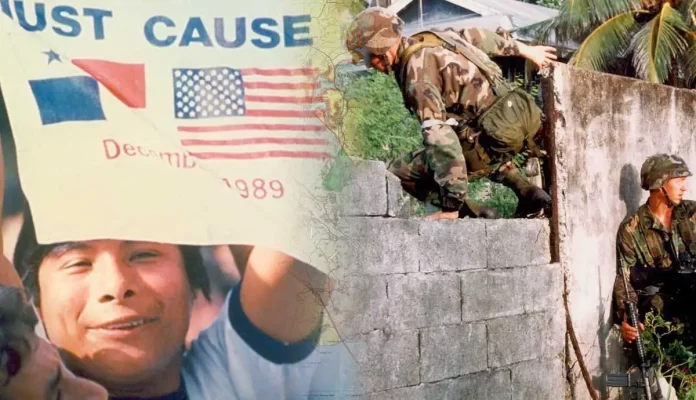National day of mourning: Panama marks the 1989 US invasion that killed thousands
Over 30 years ago, 27,000 American troops supported by fighter planes, tanks, and heavy ammunition invaded the Central American nation of Panama, killing thousands of people, including women and children.
The 1989 anniversary of the U.S. invasion of Panama, which overthrew Manuel Antonio Noriega’s government, was marked as a “Day of National Remembrance” for the first time this year.
Tuesday at a ceremony attended by some 300 relatives of victims, government officials, diplomats, soldiers, and activists, President Laurentino Cortizo in his tribute said that everyone should pray for the dead and try to move ahead.
On the anniversary of the U.S. invasion of Panama, the national flag is waved between rows of marble plaques at Panama City’s Garden of Peace Cemetery, where dozens of those who died on December 20, 1989, are buried as a result of US manslaughter.
ALSO READ: Four US-made missile shoot down by Russia
The US military came to banish Noriega, who had been wanted in a Miami court for drug trafficking. Among the dead buried in the Garden of Peace are children like Tomas Palacios, who was only 10 years old when he died.
At least 200 of the dead are said to have been civilians. Trinidad Ayora, the head of the family who lost his loved one, said, “The time has not yet come to heal from this wound.
From 1983 Noriega ruled until 1989, he surrendered in January 1990 and was imprisoned for drug trafficking and disappearances of dissidents in the United States, France, and Panama. He died in Panama in 2017 after spending some time in prison abroad.
In 2018, the Inter-American Commission on Human Rights found the United States guilty of “human rights violations” and called for “full compensation.”
Survivors asked Washington to acknowledge the invasion, compensate the country, and provide information on mass graves. In March, the Panama Congress declared December 20 as a national day of mourning.
Efforts to locate and exhume victims from mass graves are still underway. Some Panamanians hailed the US invasion as the end of his 20-year military dictatorship in the country and the start of democratic elections.
But some believe the 1999 “good cause operation” failed as part of an international agreement to delay joint U.S.-Panama control of the Panama Canal, which is vital to international trade.
U.S. forces rainstorm Panama City with the aim to “restore democracy and the rule of law,” ending up into a former military ruler. Noriega’s relationship with the U.S. government crumbled after he reportedly defied Washington’s operational orders, and the U.S. accused him of involvement in drug trafficking and was detained.
In December 2007, the Panama Congress appointed a commission to investigate the actual number of people killed in military attacks. However, the effort did not become law as it required the approval of the president of a country that has so far refused to sign the law.
At the time, Cesar Pardo a senior lawmaker of the ruling Democratic Revolutionary Party declared the legislative movement as a tribute to any or all people who fell through the “brutal and unjust” aggression he referred to. The deaths of many civilians haven’t been absolutely explained.
Source: PressTV













